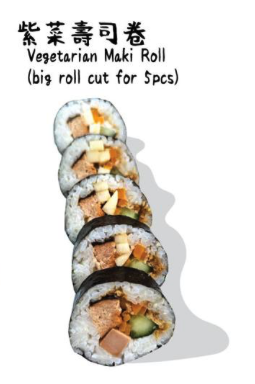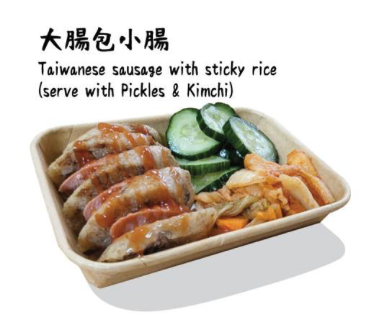Taiwan Delicacies
About Taiwan Delicacies:
The vibrant warmth of Taiwanese hospitality, combined with diverse cultures, brings delicious food to meet you, creating unique sparks together!
We come from Taiwan, venturing far from home to Australia. While adapting to a new culture, we deeply miss our homeland. Through delicious food and a passionate heart, we make new friends and share the bittersweet moments of life.
In different times, places, and cultures, the kindness and warmth between people accompany us in facing life’s challenges. These serendipitous encounters bring us together, and the post-event culinary workshop continues this connection.
We look forward to meeting you!

Vegetarian Maki Roll (紫菜壽司卷):

Ingredients: White rice, sushi vinegar, roasted seaweed, salad dressing, cucumber, carrot, vegetarian ham, vegetarian furikake
Instructions:
1. Mix sushi vinegar (made of rice vinegar, sugar, and salt) evenly into the rice to give it a slightly tangy flavor and a glossy texture.
2. Cut tofu skin, cucumber, carrot, and vegetarian ham into thin strips for easier rolling.
3. Spread the prepared sushi rice evenly over the seaweed. Arrange tofu skin, cucumber, carrot, and vegetarian ham in the center. Add salad dressing and vegetarian furikake on top. Roll everything using a bamboo mat, slice into pieces, and serve on a plate.
The origins of sushi can be traced back to ancient Southeast Asia. Early forms of sushi were different from what we know today, primarily used for preserving fish. This early type, called narezushi (fermented sushi), involved fermenting fish with rice, where the rice acted as a preservative and was not consumed.
During the Edo period (17th to 19th century), sushi evolved into the familiar nigiri sushi style. In Edo (modern-day Tokyo), with its abundant seafood, sushi chefs began mixing vinegar with rice and pairing it with fresh raw fish. This quickly-prepared sushi, eaten immediately, was known as Edomae sushi and became the prototype for modern sushi.
Over time, sushi culture spread worldwide, evolving in different regions into unique variations, becoming an internationally recognized cuisine.
Taiwanese sausage with sticky rice (serve with Pickles & Kimchi) (大腸包小腸):

Taiwan is renowned for its rich cultural heritage and famous street foods, such as stinky tofu, sausage wrapped in glutinous rice, and oyster omelets. One must-try classic Taiwanese street food is the sausage wrapped in glutinous rice—a flavorful and layered delicacy.
This snack, also called the “Taiwanese hot dog,” originated as a Hakka worker’s snack in Hualien, Taiwan. It gained popularity in night markets during the 1990s and is now a staple street food across Taiwan. Many vendors at tourist spots even use dice games to entertain customers. It draws comparisons to the American hot dog due to its structure and appeal.
Why It’s So Beloved:
1. Rich Texture: The dish involves slicing open a glutinous rice sausage and filling it with a smaller sausage. The softness of the rice sausage contrasts beautifully with the springy texture of the smaller sausage, creating a multi-layered bite.
2. Versatile Flavors: Various toppings like pickled vegetables, peanut powder, and sweet chili sauce can be added, offering a unique taste in every bite.
3. Nostalgia and Local Culture: This dish holds sentimental value as a childhood favorite and represents Taiwanese culinary traditions, often found in night markets and traditional markets. It’s a gateway for locals and visitors alike to explore Taiwan’s food culture.
4. Satisfying and Filling: The combination of glutinous rice and sausage provides a hearty snack or light meal, ideal for satisfying hunger on the go.
5. Simple Yet Remarkable: Combining two traditional Taiwanese ingredients with straightforward preparation creates an extraordinary taste experience. This “double enjoyment” leaves a lasting impression.
